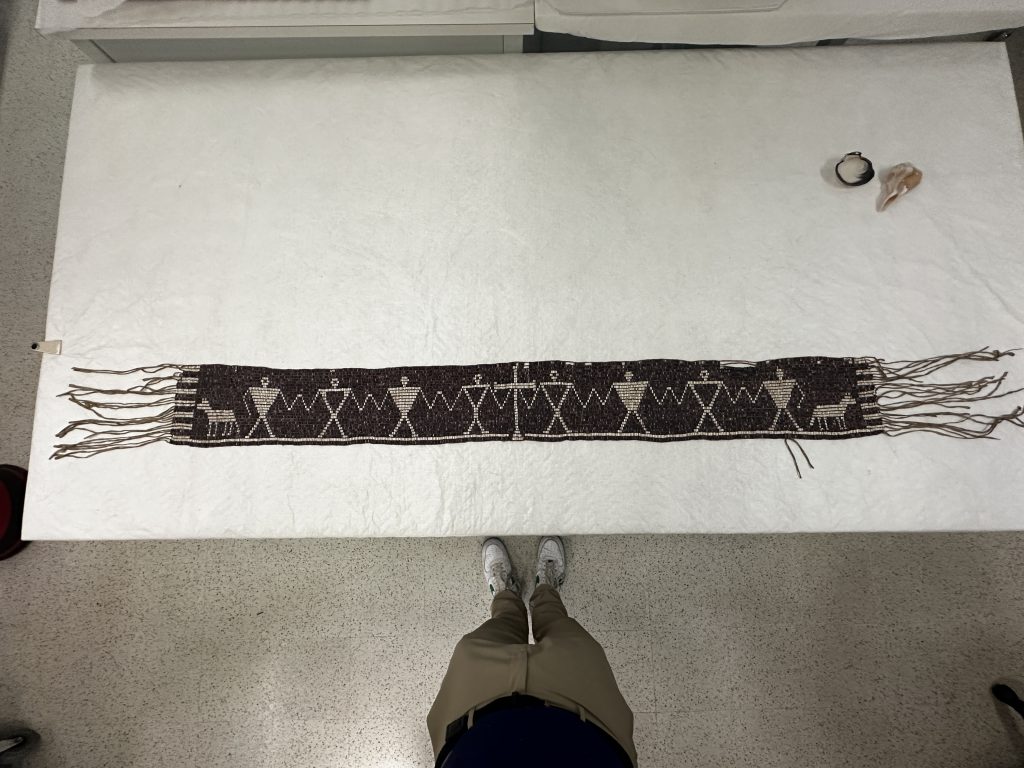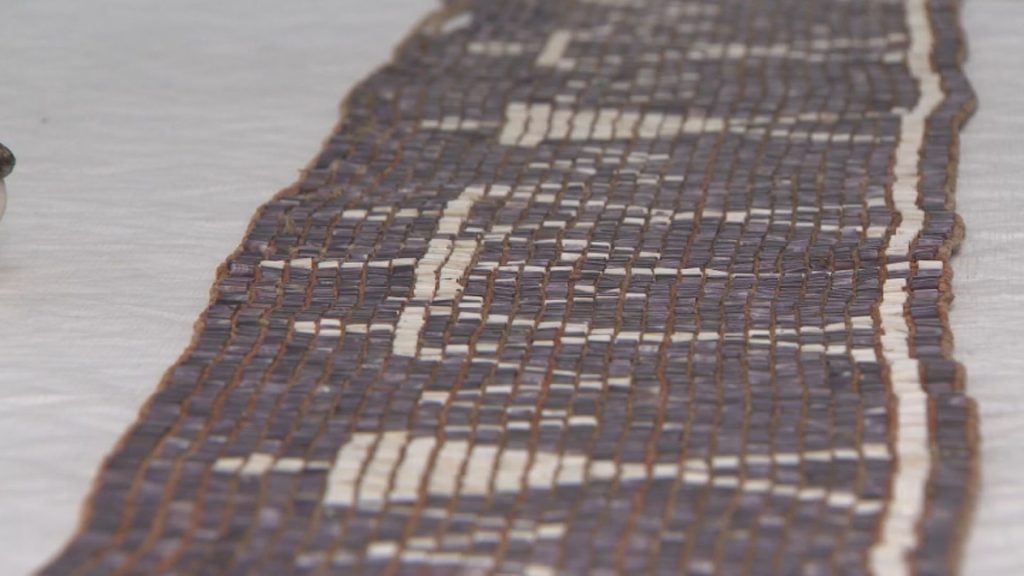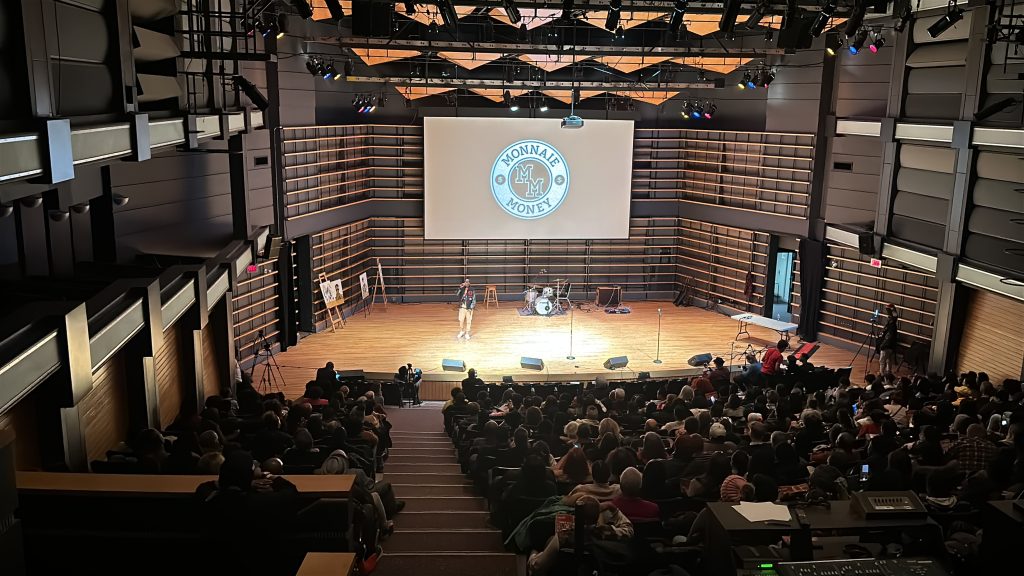‘It has to happen now’: 300-year-old Two dog wampum belt to be repatriated in Kanesatake
Posted November 10, 2024 1:49 pm.
Last Updated November 11, 2024 7:56 am.
One of the most precious and culturally significant wampum belts is set to return home to Kanesatake, after being in colonial hands for more than a century since one man sold it – without permission from the community.
The 300-year-old Two-Dog Wampum Belt, is currently at the McCord Stewart museum and dates back to the 18th century, signifying the sanctity of Kanesatake’s traditional territory.
Curator of the McCord Museum’s Indigenous cultures collection, Jonathan Lainey says discussions began following last years Wampum: Beads of Diplomacy exhibit with community members and leaders.

“Now we feel the timing is good because we had this collaboration with Kanesatake here at the museum,” he said. “We are really working towards repairing the wrongs of the past,” Lainey said.
The belt has been in the possession of the McCord Stewart Museum for over a hundred years with the museums founder, David Ross McCord buying the belt in a private sale from Mohawk David Swan in 1919.
The Haudenosaunee Confederacy is spread across Canada and into the United States made up of six nations, Seneca, Cayuga, Onondaga, Oneida, Mohawk, and Tuscarora.
Returning home

Lainey has researched and written multiple journals on the belt, saying it is an incredibly unique piece of history, saying that artifacts can be repatriated if they were acquired illegally or non ethically, or if they are sacred objects.
“Sometimes we hear stories where Indigenous communities have to actually deal and negotiate for ten years with an institution,” he said. “Honestly I don’t understand why it takes so long for them, we meet with them we agree together and we actually act.”
Though the museum still holds the wampum belt, it is only because Kanesatake is still getting ready to receive it, with director of the Tsi Ronterihwanónhnha ne Kanien’kéha Language and Cultural Center Kanerahtenhawi Nicholas citing infrastructure reconstructions.
“It was made by our people many hundreds of years ago and to see that you still can see it, you can feel the energy of the the significance of it,” she said. “To bring something back home after so many years it’s just remarkable.”
The belt, is complete with thousands of pieces of shells, with each wampum belt holding political, artistic, and cultural significance for the Haudenosaunee.

Mission accomplished
“I think one of the major emotions that people felt when they saw the belt for real… generally people felt some kind of pride,” Lainey said.
Due to the ongoing facility reconstructions at the center, there is currently no date on when the belt will be brought home, though Nichols said despite this milestone, there are many other belts in the world still missing.
“I just hope that all repatriation will be this collaborative and I really wish that we’re going to bring all our belts home one day,” Nichols said.
“[It’s] mission accomplished, knowing that this is what we need to do today,” Lainey said. “I will be a little bit sad because I know this belt, because I have access to it and it’s been here for 100 years… But I know it should not have been here originally.”








